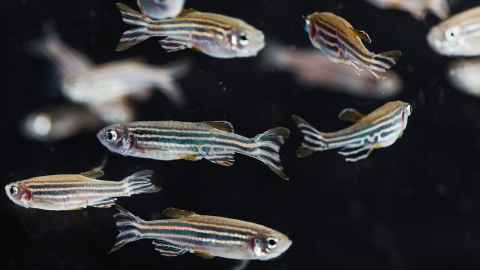Frequently asked questions on animal research
The use of animals in research and teaching is tightly regulated and each application requires rigorous review before approval.

Why are animals used in research?
The judicious use of animals in research helps us understand vital information about human and animal health and welfare and the health of the environment. Animal-based research has also been instrumental in understanding the fundamental ways in which normal bodies work.
With this knowledge scientists have been able to improve quality of life and save lives by developing new treatments for many animal and human diseases and conditions. New Zealand law requires that animals are only used when alternatives such as cell cultures or computer modelling are not available.
How is animal research regulated?
Applications for work using animals are assessed by the University of Auckland Animal Ethics Committee (AEC). This often takes several months as applications are highly scrutinised.
Strict legislation and ethical protocols guide animal research including the requirement for researchers to provide rigorous justification for the need to conduct animal research. Researchers must demonstrate that there is no possibility of using alternatives, they must use the fewest number of animals needed and harm to animals is the minimum possible while positive welfare is maximised.
Under New Zealand’s Animal Welfare Act, all animal research or teaching activities must have AEC approval. The University’s AEC must pass mandated audits and the Director-General of the Ministry for Primary Industries must approve the University’s Code of Ethical Conduct.
What types of animals are used in research?
Mice, rats, and zebrafish are primarily used for research at the University of Auckland. A small number of sheep, pigs, birds, and rabbits are also used. Field-based studies include various wildlife species.
Do animals benefit from research?
Research carried out using animals has been instrumental in the development of many medicines and procedures which improve the health and welfare of animals. Research on wildlife provides direct and indirect benefits for specific species and their habitats.
What is the cost to the animals?
The Animal Ethics Committee is required by law to ensure that the pain and distress of animals is the minimum possible and that that the benefits derived from the use of animals are not outweighed by the likely harm to the animals. In 2020, about 50 per cent of all procedures carried out at the University were class as ‘no impact’ or ‘little impact.’
How are the animals cared for?
Basic needs (food, water, and housing), stable temperature and humidity range, appropriate social groups, and appropriate enrichment are provided for animals. This allows them to express more natural behaviours and decreases the potential for detrimental mental or physical health effects that may result from the laboratory environment.
This may include providing shelters and nesting materials, group housing, toys, treat foods, chew sticks, human interaction for social species, and opportunities for foraging.
Specialised animal care technicians look after the animals daily, while dedicated veterinarians oversee the animals' physical and psychological health. The scientists who work with these animals are also closely engaged in their care. Researchers depend on robust and healthy animals to produce reliable results, so it is in everyone’s best interest to provide the best care and environment possible. Everyone who works with laboratory animals has a responsibility to care for their well-being.
New Zealand law dictates that the physical, health, and behavioural needs of animals must be in accord with good practice and scientific knowledge.
Where are animals sourced?
Most animals used at the University are bred within our own facilities. Farm animals may be purchased from local farms. Wild animals may occasionally be housed at the University for short-term research. Some animals are imported from facilities dedicated to breeding and supplying laboratory rodents and rabbits. This follows strict import regulations and shipping standards.
What happens to the animals at the end of a study?
At the end of many scientific studies animals are euthanised following robust international guidelines. Procedures are carried out under strict supervision by trained researchers and animal technicians.
Some wild animals are released, and some animals used in research and teaching are rehomed, when this is in the best interest of the animal and is legal to do so. The University works in partnership with the New Zealand Anti-Vivsection Society (NZAVS) and Helping You Help Animals (HUHA) to ensure as many animals are rehomed as possible.
Do you use non-human primates?
No. In New Zealand this is not allowed, unless specifically approved on a case-by-case basis by the Director-General of the Ministry for Primary Industries (MPI).
Do you use animals for teaching?
As replacement techniques prove effective, the use of animals for teaching at the University of Auckland has been replaced in many courses. When animals are required for teaching, the minimum numbers are used, and the animals cared for in the same manner as others and to the best of our ability.
Why do you use dogs in research?
A small number of client-owned pet dogs are used in studies to improve canine welfare. These dogs live at home with their owners throughout the study period and continue to live normal lives when the research ends.
Do you test cosmetics on animals?
No. It is illegal in New Zealand to use an animal in any research, testing, or teaching that is for the purpose of developing, making, or testing a cosmetic or developing, making, or testing an ingredient that is intended exclusively for use in a cosmetics.